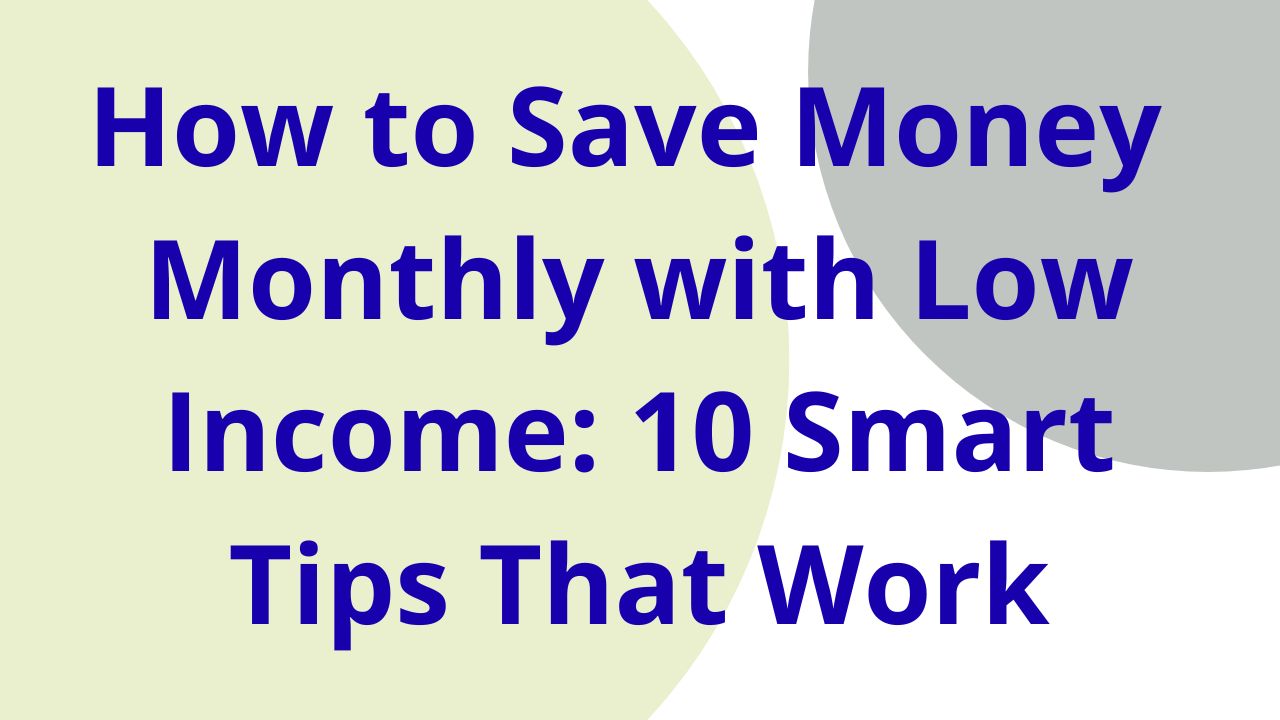Saving money on a low income might seem impossible, but with the right strategy and discipline, you can build financial security—even on a tight budget. Whether you earn minimum wage or freelance part-time, this guide will show you how to save money monthly with low income by using smart budgeting, cutting unnecessary expenses, and creating long-term savings habits.
1. Create a Simple Monthly Budget
The first step to saving money is understanding where your money goes. Track your income and expenses. Divide them into essentials (like rent and groceries) and non-essentials (like takeout or subscriptions). Use a free budgeting app like Mint or YNAB to make this easier.
SEO Tip:
Using a monthly budget helps you control spending and find areas to save—even with a limited salary.
2. Follow the 50/30/20 Rule (With Modifications)
This rule suggests:
- 50% for needs
- 30% for wants
- 20% for savings
If your income is very low, try 60/20/20 or 70/15/15. Customize the rule to fit your lifestyle, but always allocate something—no matter how small—for savings.
3. Cut Unnecessary Subscriptions
Many people pay for apps, streaming services, or memberships they rarely use. Audit your bank statements and cancel anything you don’t use monthly.
Pro Tip: Replace paid services with free alternatives like YouTube, free fitness apps, or local libraries.
4. Cook at Home Instead of Eating Out
Eating out even twice a week can cost over $100 per month. Buy groceries in bulk and cook simple meals. You can save hundreds each month this way.
5. Use Public Transport or Carpool
Car maintenance, gas, and insurance can eat a big chunk of your income. If possible, use buses, trains, or carpooling services. It’s a great way to cut monthly commuting costs.
6. Shop with a List and Avoid Impulse Buys
Plan your grocery list before shopping—and stick to it. Impulse buying is one of the biggest money leaks, especially for people on a low income.
7. Pay Yourself First, Even If It’s $10
Saving money doesn’t require big amounts. Transfer a small fixed amount ($5–$10) to a savings account each time you receive income. Over time, this grows into your emergency fund.
8. Avoid Debt or High-Interest Loans
Credit cards and payday loans trap you in a cycle of debt. If you’re already in debt, prioritize paying it down quickly to avoid high interest.
9. Use Cash Instead of Cards
When you use cash, you’re more aware of how much you’re spending. Try the cash envelope system to limit spending in different categories like groceries, entertainment, and travel.
10. Take Advantage of Cashback and Reward Apps
Use apps like CashKaro, Rakuten, or Honey to get cashback on purchases. While small, these add up over time and help you save more.
Final Thoughts
Even with a low income, saving money monthly is achievable with the right mindset and planning. The key is to start small, stay consistent, and make saving a habit—not a one-time event. Start today and build your financial safety net for tomorrow.
